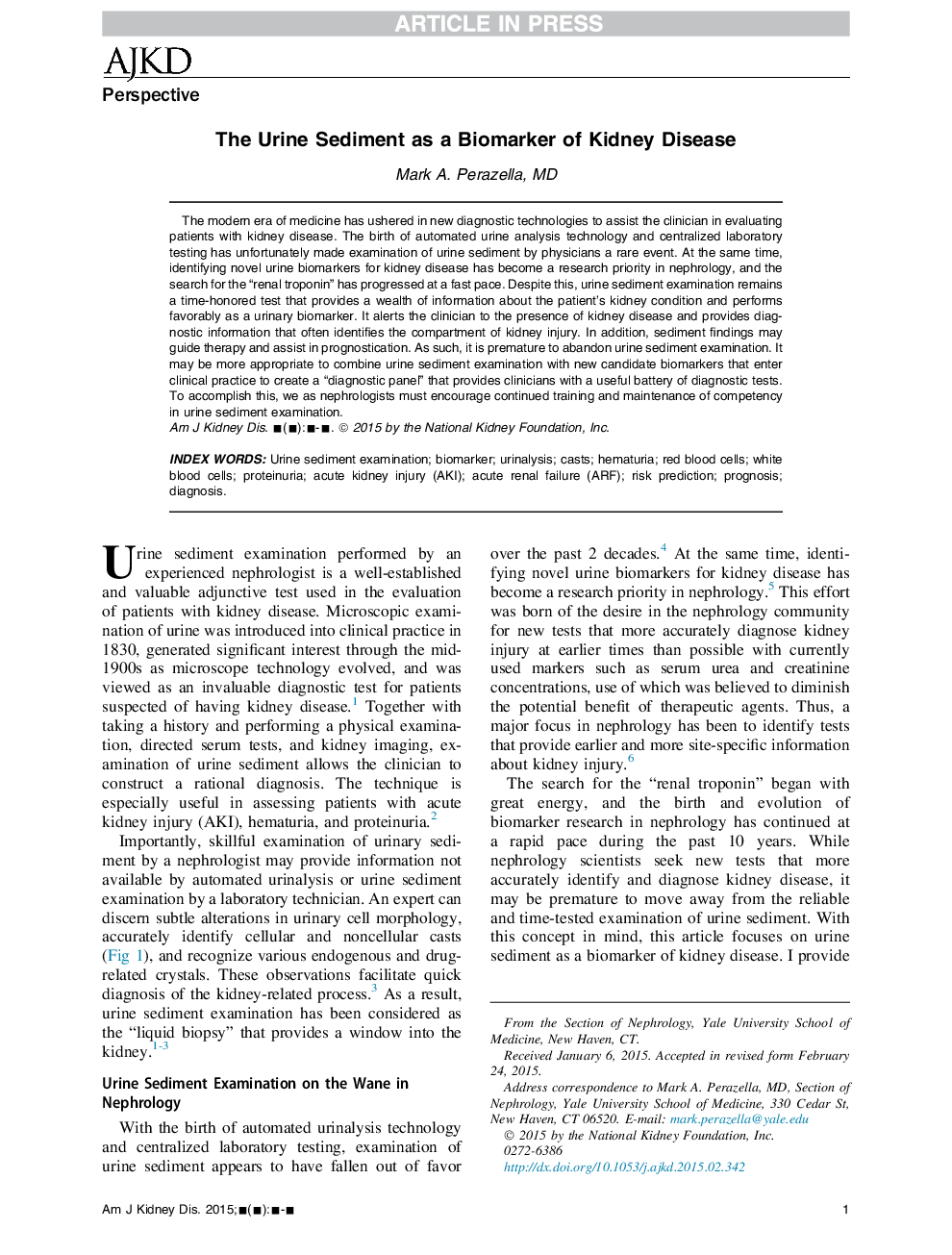| Article ID | Journal | Published Year | Pages | File Type |
|---|---|---|---|---|
| 3847443 | American Journal of Kidney Diseases | 2015 | 8 Pages |
Abstract
The modern era of medicine has ushered in new diagnostic technologies to assist the clinician in evaluating patients with kidney disease. The birth of automated urine analysis technology and centralized laboratory testing has unfortunately made examination of urine sediment by physicians a rare event. At the same time, identifying novel urine biomarkers for kidney disease has become a research priority in nephrology, and the search for the “renal troponin” has progressed at a fast pace. Despite this, urine sediment examination remains a time-honored test that provides a wealth of information about the patient's kidney condition and performs favorably as a urinary biomarker. It alerts the clinician to the presence of kidney disease and provides diagnostic information that often identifies the compartment of kidney injury. In addition, sediment findings may guide therapy and assist in prognostication. As such, it is premature to abandon urine sediment examination. It may be more appropriate to combine urine sediment examination with new candidate biomarkers that enter clinical practice to create a “diagnostic panel” that provides clinicians with a useful battery of diagnostic tests. To accomplish this, we as nephrologists must encourage continued training and maintenance of competency in urine sediment examination.
Keywords
Related Topics
Health Sciences
Medicine and Dentistry
Nephrology
Authors
Mark A. MD,
